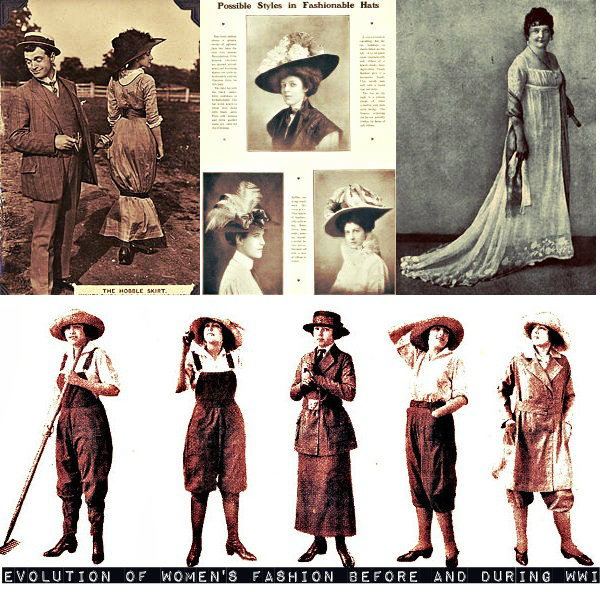From the ‘directoire’ look to sporting trousers and trench coats, a book reveals the many innovations women’s fashion went through because of the Great War.
Before the outbreak of the Great War, women were encased in narrow-hem-lined hobble skirts which were a serious impediment to walking and trussed up in corsets. Wide-brimmed hats were also highly stylish so one had to wear one whatever the cost. Such was women’s fashion in those days regardless of social or political standings.
Then came the ‘directoire’ look in 1914, the high waists that allowed fashionable women to go corset-free, thus, having more freedom with their movements.
However, when the First World War broke out and went on for four long years, it wasn’t only food that came in short; so were materials for making clothes. Due to this, the ‘directoire’-styled clothing had to gave way to a more streamlined women’s fashion. The elaborate ad unique look the ‘directorie’ afforded had to be done for. Because of the nature of their work (stepping into the roles the men who went to war left off) and the scarcity of the materials, women had to make do of simpler clothing and even trousers.
Gone were the hobble skirts so high in women’s fashion when 1916 rolled in. In their place were the A-lined skirts, an imitation to the military uniform. Patriots had particularly liked this style. In time, it became extremely popular.
The once long hemlines skirts had become shorter. It was not just to copy military uniforms or to have more freedom for movements. Shorter hemlines were also a reflection as to how getting hold of clothing supplies was becoming a very expensive venture as the Great War progressed. Not only did the everyday women’s fashion suffered. Even evening gowns had to go shorter.
As there was a scanty supply of wool, women adopted the make-do-and-mend attitude — reworking old clothes adapting them according to their needs as well as making new ones last longer. Women began to don on looser clothes. Aside from the A-line skirt, women civilians also copied the looser-fitting jackets women in service wear.
Nevertheless, not all women adapted to the changes breezily. Conservatives frowned upon the innovations women’s fashion was going through like the wearing of trousers and the trench coats. Some found these ‘manly clothing’ uncomfortable to wear. Among these women was WWI journalist Dorothy Lawrence.
But while some abhorred them, there were women who found wearing trousers to be very liberating. They loved the freedom wearing breeches afforded them.
Wearing of trousers for women after the war became unacceptable, though. The men once again returned home and their female counterparts were once again hustled into their domestic roles.
The Great War pushed social change, as far as women are concerned. This gave birth to the ‘flapper’ look which became popular in the 1920s.
Trousers had given the women a new height of freedom. And because they have tasted it, they were unwilling to let go of it again.
Read more about the Great War and its effects on fashion and the society in Lucy Adlington’s Great War fashion: Tales from the History Wardrobe published by The History Press. The book is available for £25.
